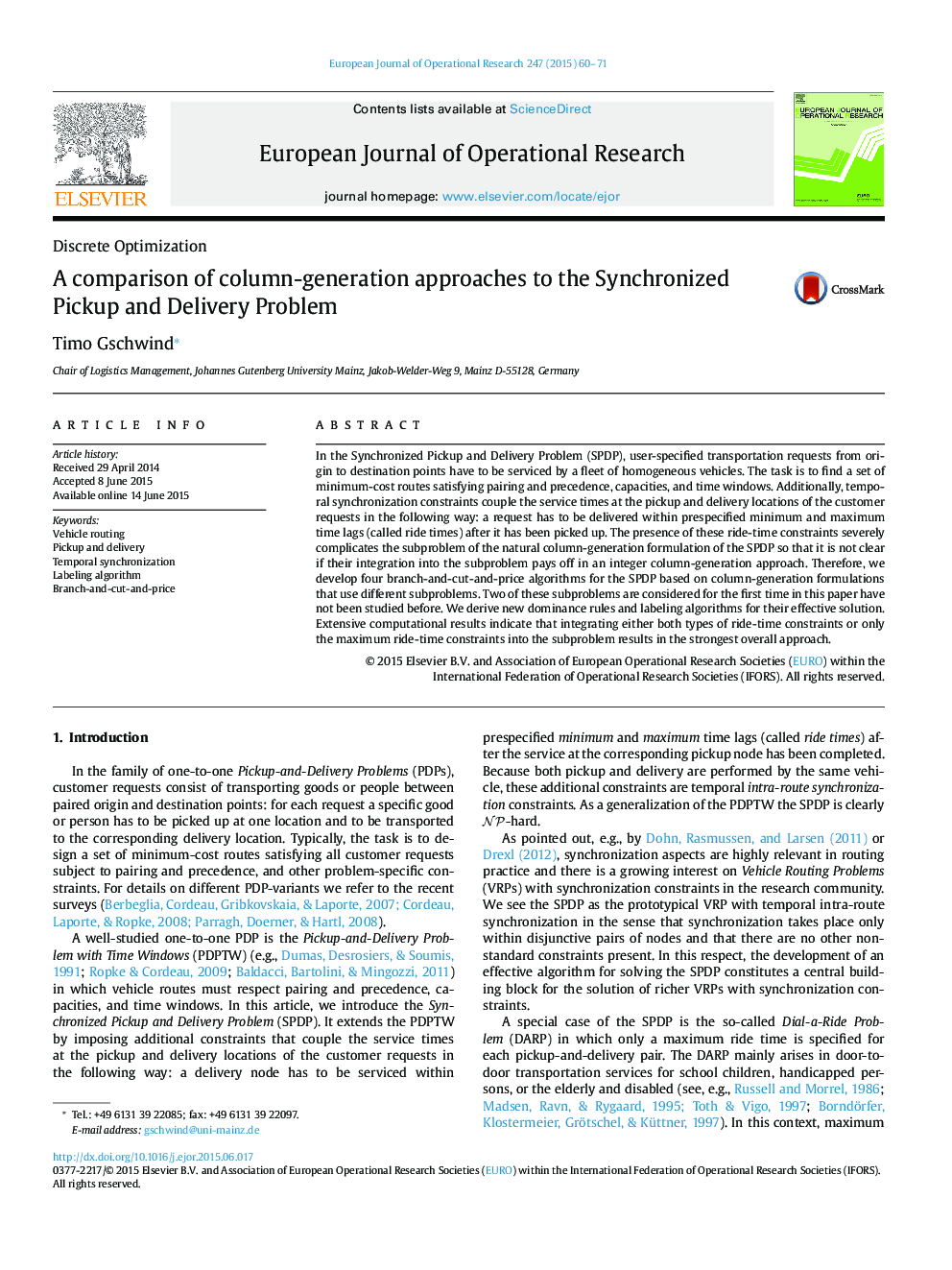| Article ID | Journal | Published Year | Pages | File Type |
|---|---|---|---|---|
| 6896440 | European Journal of Operational Research | 2015 | 12 Pages |
Abstract
In the Synchronized Pickup and Delivery Problem (SPDP), user-specified transportation requests from origin to destination points have to be serviced by a fleet of homogeneous vehicles. The task is to find a set of minimum-cost routes satisfying pairing and precedence, capacities, and time windows. Additionally, temporal synchronization constraints couple the service times at the pickup and delivery locations of the customer requests in the following way: a request has to be delivered within prespecified minimum and maximum time lags (called ride times) after it has been picked up. The presence of these ride-time constraints severely complicates the subproblem of the natural column-generation formulation of the SPDP so that it is not clear if their integration into the subproblem pays off in an integer column-generation approach. Therefore, we develop four branch-and-cut-and-price algorithms for the SPDP based on column-generation formulations that use different subproblems. Two of these subproblems are considered for the first time in this paper have not been studied before. We derive new dominance rules and labeling algorithms for their effective solution. Extensive computational results indicate that integrating either both types of ride-time constraints or only the maximum ride-time constraints into the subproblem results in the strongest overall approach.
Related Topics
Physical Sciences and Engineering
Computer Science
Computer Science (General)
Authors
Timo Gschwind,
